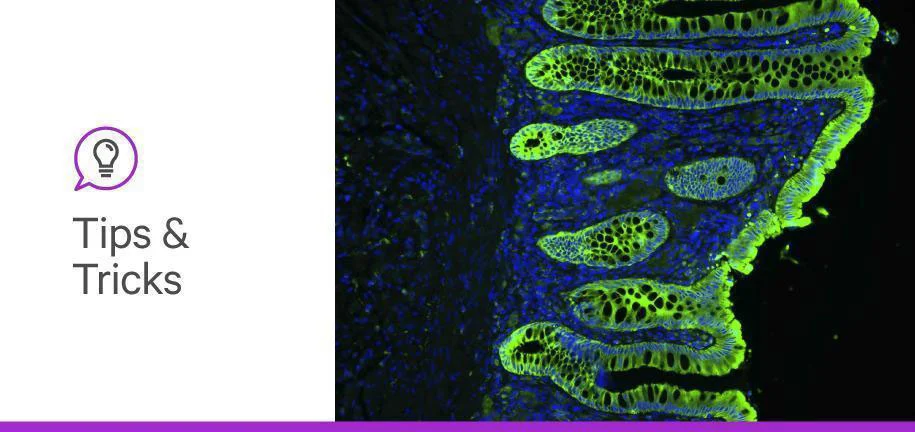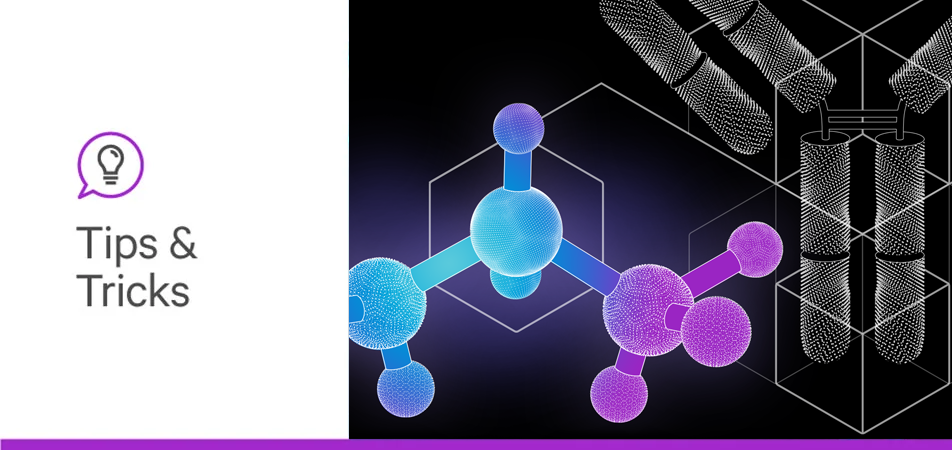

Immunofluorescence (IF) is a technique where researchers study the location and expression of antigens in cells and tissues using an antibody labeled with fluorescent dye. In IF, secondary antibodies bind to the primary antibody to detect proteins and antigens. The secondary antibody is directly conjugated to or allows for subsequent coupling to a fluorescent molecule (fluorophore) for target visualization under a microscope. This blog covers important considerations for secondary antibody selection, including labeling method, species reactivity, antigen of interest location, optimal fluor conjugates, and signal amplification or multiple labeling (multiplexing) requirements.
An important initial consideration is the labeling methodology and whether to use multiple antibodies (indirect IF) or a single conjugate (direct IF). Direct labeling is a faster method with a single staining step, wherein a primary antibody is conjugated to a fluorophore without the need of a secondary antibody. In indirect labeling, an unlabeled primary antibody is incubated with the sample that binds the target epitope followed by an incubation with a fluorophore-conjugated secondary antibody that binds the primary antibody. Though slower, indirect IF has higher sensitivity, provides signal amplification, and allows for detecting multiple targets on the same sample (1).
When performing indirect IF, the secondary antibody should be raised against the host species used to generate the primary antibody. For example, if a primary antibody raised in mouse is selected, the compatible secondary antibody would need to be reactive to mouse, but raised in a different host species (e.g., a rabbit anti-mouse). Furthermore, to prevent the secondary antibody from cross-reacting with endogenous immunoglobulins (IgG) in the tissue, the primary antibody needs to be derived from a different species than that of the sample. It’s also imperative to consider the isotype of the primary antibody when selecting the secondary antibody. Polyclonal antibodies are generally IgG isotypes and therefore, the secondary is typically anti-IgG heavy and light (H+L) chains to provide coverage for the wide variety of isotypes that make up the population. Monoclonal antibodies often have a specific isotype and subclass, such as IgG1. It’s also been described that IgG subclass-specific secondary antibodies are superior to generic IgG secondary antibodies in several tissue applications in which mouse monoclonal antibodies were used (2).
Secondary antibodies are commonly conjugated with fluorescent labels, but for greater signal amplification, biotinylated secondary antibodies can be employed alongside a streptavidin-conjugated fluor. Particularly for fluor-conjugated secondary antibodies in multiplexing experiments, consideration needs to be given to the fluor assignment to ensure minimal overlap in spectral emission. Co-localization of the fluors in the sample can often be mistaken instead of bleed through. For example, Alexa Fluor 488 fluorescence is known to bleed through into the Cy3 detection channel. Scanning the specimen with the individual lasers sequentially and detecting fluorescence in each channel to coincide with laser illumination to produce a more accurate merged image of fluorophore distribution can minimize this problem (3). Another consideration is assigning fluor-conjugated secondary antibodies so that lower expressing targets are tagged with brighter fluors than higher expressing epitopes. For example, if performing an IF panel in mouse spleen with CD3 and CD11c, CD3 would be a more highly expressed antigen because of the density of T cells present in the tissue (21–25% of all cells) while CD11c, which is expressed on dendritic cells, is only expressed on 1–3% of all cells. Thus, in picking fluor-conjugated secondary antibodies, best practice would be to select a dimmer fluor for CD3, but a brighter fluor for CD11c (4).
For each primary antibody, polyclonal secondary antibodies can recognize multiple epitopes to increase binding and signal levels. Similarly, multiple fluorochrome-protein (avidin or streptavidin) complexes can bind to a single biotinylated secondary antibody to increase signal levels. A combination of these methods can result in greater signal amplification. Tyramide signal amplification is another method for enhanced detection. The secondary antibody for this method needs to be conjugated to an enzyme like horseradish peroxidase. The mechanism for this procedure is based on a catalytic reporter deposit in close vicinity to the epitope of interest (5).
Multiple labeling, or multiplexing, helps researchers study the co-expression or co-localization of different targets within cells and tissues. Secondary antibodies are often involved to more effectively probe antigens with higher sensitivity. To achieve multiplexing IF, a standard method is to first incubate with a primary antibody then follow the incubation with the secondary antibody conjugated to the fluorochrome. After that, an additional blocking step is necessary to prevent any trace of the current primary antibody from being recognized by the next secondary antibody. Next, another combination of a primary antibody and secondary antibody can be applied to the tissue, but a fluorochrome that does not overlap with the previous needs to be used to be compatible for imaging. Researchers studying host-cell and pathogen interactions have demonstrated multiplexing IF with polyclonal and monoclonal antibodies raised in the same species (6). When the primary antibodies are raised in different species, there are several products that combine secondary antibody reagents for multiplexing in a cost-effective, efficient format, such as VectaFluor™ Duet Immunofluorescence Double Labeling Kit, DyLight™ 594 Anti-Rabbit (red), DyLight™ 488 Anti-Mouse (green) . Secondary antibodies are also available in formats that may have improved multiplexing performance. Commonly, secondary antibodies are available as the whole IgG, but they also come in Fab fragments, which are monovalent portions of the antibody that still bind antigens without the Fc structure. These molecules have been demonstrated as effective secondary antibody selections for multiplexing IF studies (7). In particular, they are useful for blocking the surface of IgG’s for double labeling primary antibodies from the same host species (8).
We hope this blog post gave you valuable information so you have the confidence to perform IF using secondary antibodies. For more resources on IF and secondary antibodies, check out our IF Resource Guide, and stay tuned to the blog for more tips and tricks.





Stay in the Loop. Join Our Online Community
Products
Ordering
About Us
Application
Resources

©Vector Laboratories, Inc. 2025 All Rights Reserved.
To provide the best experiences, we use technologies like cookies to store and/or access device information. Consenting to these technologies will allow us to process data such as browsing behavior or unique IDs on this site. Not consenting or withdrawing consent, may adversely affect certain features and functions. Privacy Statement